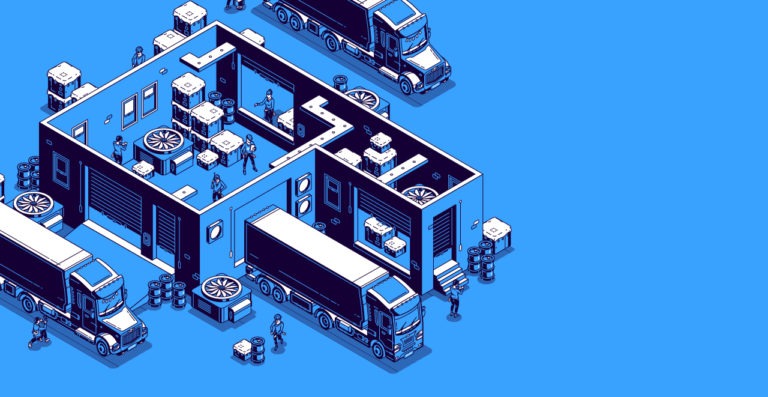
Your business may rely on an enterprise resource planning (ERP) system to fill customer orders as quickly and efficiently as possible, but is that fast enough for the speed of today’s commerce? ERP technology like SAP is a generalist solution that can help a business run efficiently, but it lacks the specialized optimization capabilities of a dedicated supply chain management platform. That means relying on your ERP for high-speed order fulfillment can leave customers disappointed and cost you opportunities to grow your business.
Here are three problems that can arise if you expect traditional ERP systems to accomplish high-speed order fulfillment.
1. Poor customer experience
Customers demand and expect a seamless experience when they place an order with your business. If you cannot provide customers with real-time insights into your product inventory, there is a risk that you’ll accept an order you cannot fulfill. In this scenario, you may need to go back to the customer to let them know their order may be delayed or canceled.
That results in a poor customer experience that damages your brand reputation. Worse, that customer is likely to look to your competition for dependable order fulfillment going forward.
2. Subpar inventory management
Your ERP system must account for ongoing inventory changes. If you run out of products, you risk falling behind on customer orders. Or, if you have too much inventory on hand, your storage costs can rise. And let’s not forget about what happens if demand for a particular product rises dramatically in a short period of time. You need to be able to quickly adapt to a sudden increase in demand. If you’re managing your inventory with 1990s ERP technology, you’ll be ill-equipped to meet modern-day customer needs.
3. Supply chain failures
Inaccurate data hampers supply chain forecasting. It can also increase the likelihood of supply chain errors and lead to production issues that make it tough to fulfill customer orders on schedule. Plus, low-quality data drives up supply chain costs.
Don’t expect ERP data quality problems to disappear on their own with a system update. Today’s businesses need to proactively optimize supply chain planning and execution before the limitations of ERP damage their bottom line.
What to Look for in a Supply Chain Management Platform to Support High-Speed Order Fulfillment
When it comes to high-speed order fulfillment, you need to go beyond a traditional ERP system. A purpose-built digital supply chain platform can help you improve planning and flexibility to support true high-speed fulfillment. It empowers businesses to get the most value from supply chain data and consistently fulfill customers’ orders.
A dedicated supply chain data management solution can offer support in several areas. It enables the instant retrieval of data across your network and transforms it into actionable insights. This helps your business optimize your entire operation, discovering new efficiencies and opportunities to improve your bottom line.
To move beyond the limitations of ERP for supply chain, here are six factors to consider:
1. Customer experience
It should be simple for customers to submit orders and have them filled without delay. As such, you need to avoid systems that require extensive, manual data entry. These systems hamper the customer experience to the point where the process to submit an order becomes too much for a customer to handle.
Look for a solution that ensures you can provide customers with real-time product inventory insights. This allows customers to know what’s available and submit their orders based on your most up-to-date inventory.
2. Order processing
As soon as an order is placed, your system should kick off the fulfillment process. You should be able to fill the order in a designated timeframe that aligns with the customer’s expectations. The platform should empower your business to keep up with, and adjust to, fluctuating demand.
3. Customer insights
The right solution will allow you to facilitate and analyze your business data to learn about order volumes and assess customer buying patterns and trends. The system should enable you to establish key performance indicators (KPIs), so you can track your orders and sales. This gives you insights you can use to avoid supply chain issues down the line. It also enables you to learn about your customer base and explore ways to improve your service levels.
4. Speed
Supply chain data can be collected at regular intervals. This accelerates the process of synchronizing large data volumes. It also reduces load and return times between your ERP system and external data sources in comparison to relying solely on a traditional ERP system .
5. Scalability
Distributed in-memory processing ensures only changed data gets reprocessed. That way, your business can scale the solution across large data volumes.
6. Data accuracy
Error-checking – like the identification of duplicate or inaccurate data, which goes beyond just traditional data matching and number validation – must be performed across data sets. The result: accurate data is always used to keep your supply chain running at peak levels.
The ideal supply chain data management solution can really have an impact when it comes to high-speed order fulfillment. By partnering with Logility, you can integrate a supply chain data management solution into your ERP system, without the need for a lengthy, complex custom development process.
Logility offers a template-based supply chain and ERP data integration that features pluggable objects that contain detailed maps and associated processing logic. In doing so, our integration eliminates the headaches commonly associated with managing custom development solutions. To learn more, please contact us today.

Written by
Nirav Patel
Director, Software Engineering
Short bio
Nirav has been with Logility for over 15 years, helping to shape the design and functionality of Logility software. As a product owner of the Logility Platform, Nirav collaborates with users and customers to understand and anticipate needs, define the product vision, and create a roadmap based on that vision. Nirav oversees all stages of product creation, including design and development.



